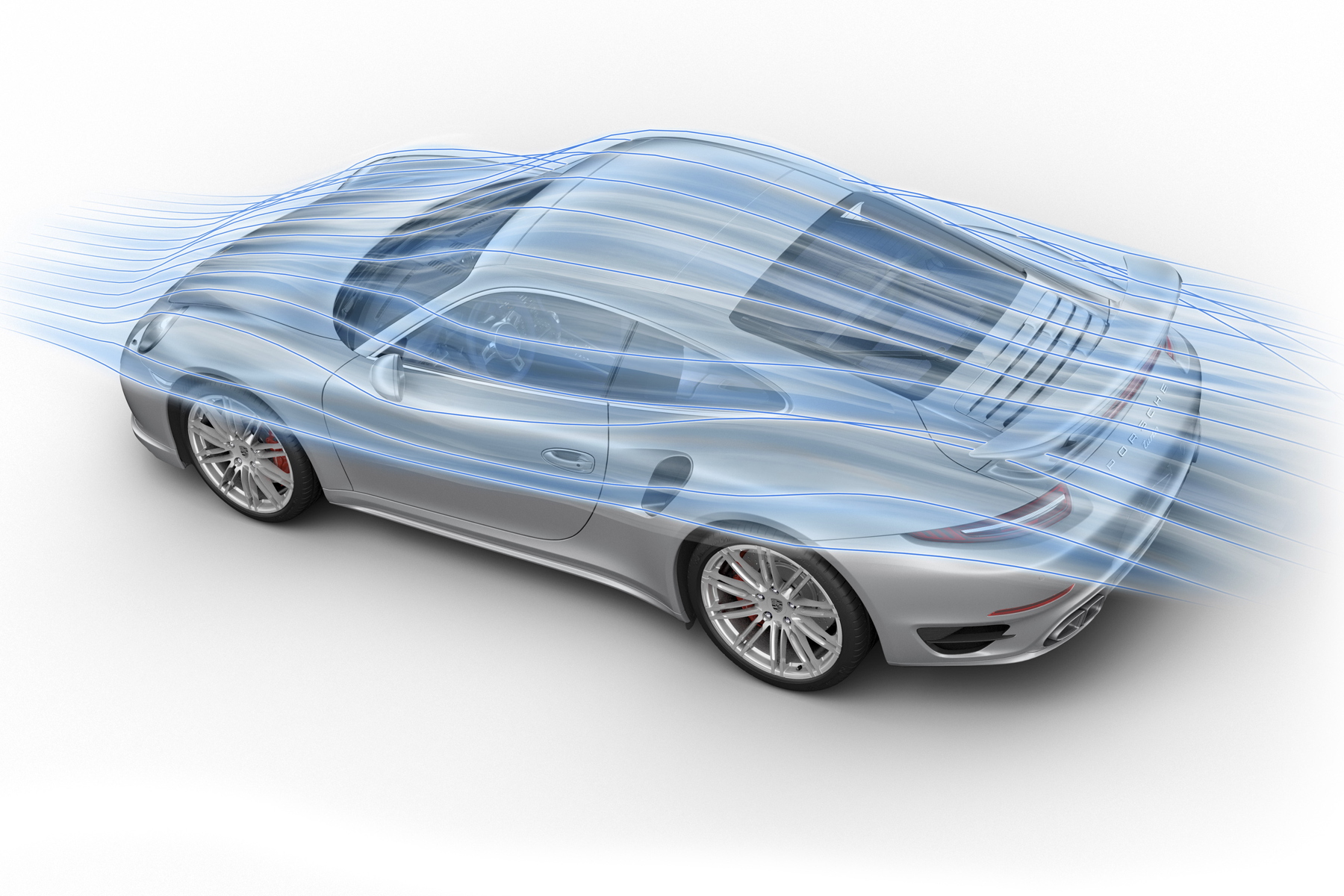Technology explained: Porsche Active Aerodynamics
After amateur racer Michael May mounted an inverted aerofoil onto his Porsche 550 racer in 1956, wings became a common sight in Formula One in the Sixties. Since then, the importance of downforce has played a key role in automotive design.
Downforce is created using an inverted aerofoil to split airflow through two paths (either traveling over the longer bottom side or the shorter top edge of the aerofoil). The air taking the top route travels slower than the air underneath the aerofoil.
This creates a high-pressure zone on top of the wing, with a low-pressure area formed on the underside. The difference in pressure pushes the wing towards the ground from above and sucks the underside down (like a wing)

Increasing the wing’s angle of attack accentuates the difference in airspeed over the two sides of the aerofoil. However, downforce brings with it an increased drag coefficient, reducing fuel efficiency and top speed.
In order to counter this, Porsche has developed PAA for the 991 Turbo in order to have the best of both worlds. Below 120kph, the front spoiler and rear wing are fully retracted. However, as the car’s speed passes 120kph, the PAA system switches to the ‘Speed’ position,
This extends the outer two elements of the pneumatically-controlled, three-part front spoiler, reducing front-end lift. Furthermore, the rear wing extends by 25mm in order to maintain the aerodynamic balance. This mode is ideal for high-speed cruising.

The PAA system’s third setting – Performance – is designed for maximum grip. In this position, the entire front spoiler is fully extended, while the rear wing is raised to 75mm and angled at seven degrees to horizontal.
At 300kph, the 991 Turbo can produce 132kg of downforce, allowing it to lap the Nordschleife two seconds faster than in the normal mode.
Our online ‘technology explained’ features are the perfect way to brush up on Porsche’s increasingly complex engineering. Read them all here.


Comments (1)